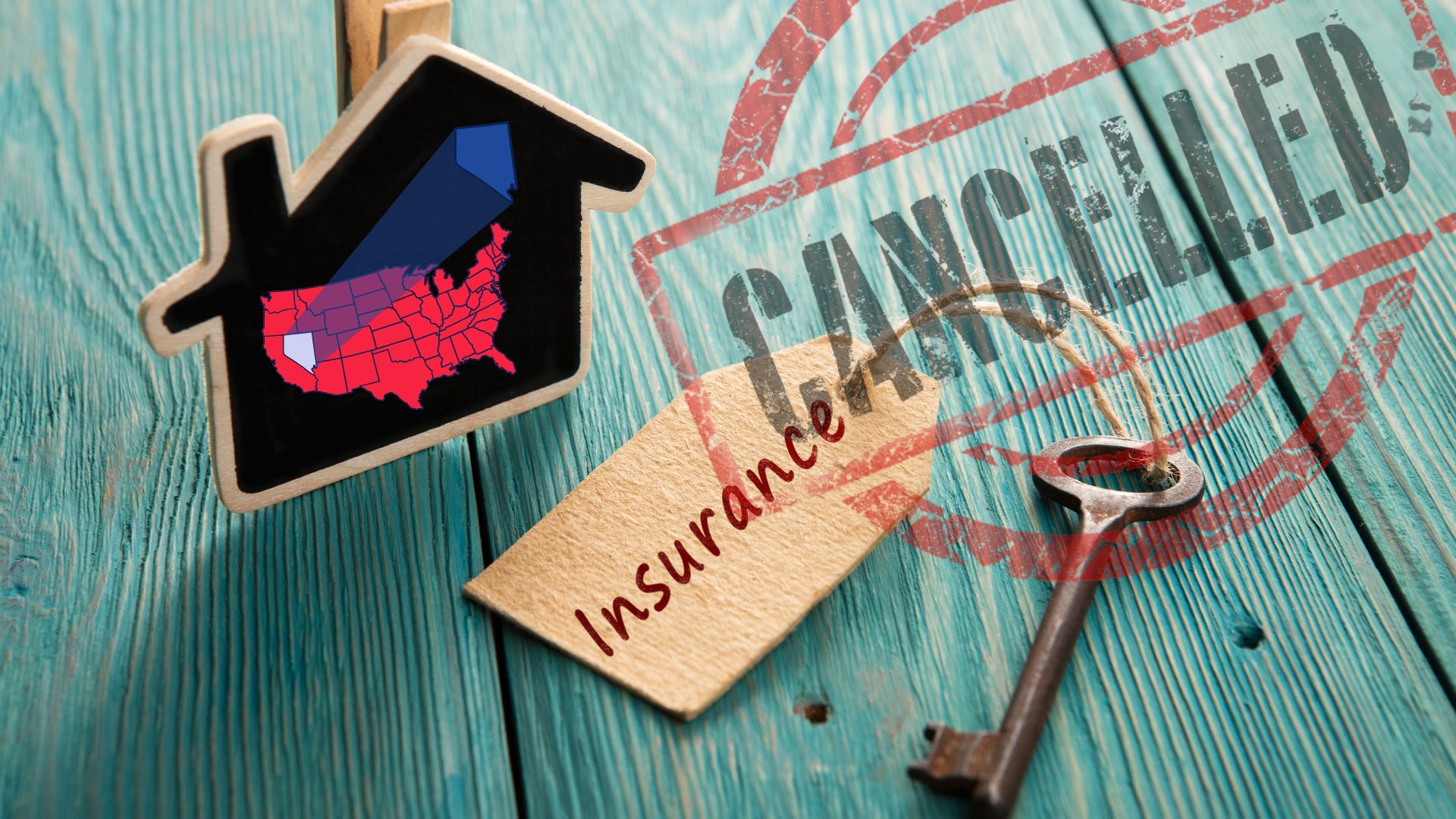Wildfire Risks Leave Nevada Homeowners Without Insurance
Imagine opening a notice in the mail and discovering your home insurance has been canceled. For hundreds of homeowners in Nevada, this isn’t a hypothetical situation. Insurance companies, wary of increasing wildfire risks, are pulling out of high-risk areas, leaving families scrambling for coverage and, in many cases, coming up empty.
A striking 481 homeowners in Nevada saw their insurance policies canceled or were denied renewal in 2023 due to wildfire risks. That’s an 82% rise compared to the previous year. What’s worse, nearly 5,000 applicants were flat-out denied coverage altogether, a whopping 104% increase.
The wildfire threat is no longer confined to remote hillsides. Fires like 2024’s Davis Fire, which scorched almost 6,000 acres and forced 20,000 people in the Reno area to evacuate, make it clear that even urban-adjacent areas are at risk. These fires hurt more than just landscapes; they make it harder for people to insure their homes, protect their investments, and, for some, even keep their mortgages.
Enter the FAIR Plan
Nevada Republican Assembly member Jill Dickman has a potential solution in her back pocket. She introduced Assembly Bill 437, which aims to launch a FAIR Plan, a program designed to help homeowners who can’t get coverage through traditional insurance markets.
FAIR Plans, which stand for Fair Access to Insurance Requirements, exist in 34 states and the District of Columbia, many of which are wrestling with risks from wildfires, hurricanes, and other natural disasters. These plans act as a safety net, offering homeowners last-resort coverage that they can’t find elsewhere.
If AB437 passes, Nevada’s FAIR Plan will require homeowners to be turned down by at least three private insurers before they qualify. Additionally, homeowners will need to undergo wildfire risk assessments and follow recommendations to reduce fire hazards around their homes. Dickman’s intent? To keep the FAIR Plan focused on those who need it most while limiting its competition with the private insurance market.
“Something needs to be done to address this crisis,” said Nevada Insurance Commissioner Scott Kipper. But there is no clear or simple fix to a problem as complicated as wildfire-driven insurance risk.
Insurance Rising Costs and Tough Choices
The frustration doesn’t stop at policy cancellations. Even those who manage to hold onto their coverage are feeling the pinch of rising costs. Many insurers, claiming increased construction expenses and disaster claims, are hiking premiums. According to Nevada’s Division of Insurance, the market’s retreat still leaves homeowners turning to surplus lines carriers, which charge higher rates and face far less regulation.
It’s not just single-family homes under threat. Condos and townhomes, often the most affordable housing options for first-time buyers, are also facing challenges. Some homeowner associations (HOAs) in Nevada have seen their insurance rates skyrocket. One unnamed HOA reportedly had its premium jump from $115,000 to $750,000—with a staggering $250,000 deductible. For residents, that translated to an emergency assessment of $4,600 per unit.
And it’s not just about homes. Without proper insurance options, entire regions of the state might see slower growth. Developers are wary of sinking money into building homes in fire-prone areas where insurance options look, well, flammable.
What Nevada Insurance Market is Learning from Other States
Nevada isn’t the only Western state fighting this uphill insurance battle. California, where wildfires have ravaged communities year after year, has the largest FAIR Plan in the country. It’s far from perfect. Critics there argue that the coverage is limited and costly, but for some residents, it’s the only option.
Colorado, meanwhile, launched its own insurer of last resort for homeowners facing wildfire challenges just last year. Their approach holds some promise, and policymakers in Nevada hope to adopt the best features of these programs while avoiding the pitfalls.
The lesson here is clear but difficult to execute: it’s about balancing insurance availability without discouraging private companies from remaining in the market. Karen Collins, a vice president at the American Property Casualty Insurance Association, pointed out that the insurance crisis reflects bigger issues like inflation, rising construction costs, and supply chain delays. It’s a complex web.
A Way Forward
If Nevada greenlights its FAIR Plan, it could give struggling homeowners some breathing room. But it’s only one piece of the puzzle. Comprehensive wildfire mitigation efforts, like prescribed burns and better land management, are crucial for reducing risks.
And while FAIR Plans can help secure stopgap protection, they’re no substitute for long-term reforms that entice insurers to stay active in the market.
For Nevada families, the stakes are high. Wildfires have already torched nearly one-fifth of the state’s land over the last 40 years, and fire seasons now stretch nearly year-round. A FAIR Plan won’t be a golden ticket, but it might just be the insulation Nevada homeowners need to weather this storm.
The real work will be collaborating across industries and governments to ensure homeownership remains viable—even in a landscape reshaped by climate change. After all, a home isn’t just a structure. It’s your refuge, your peace of mind, and keeping it safe is worth figuring out how to lift flames off the insurance market.


